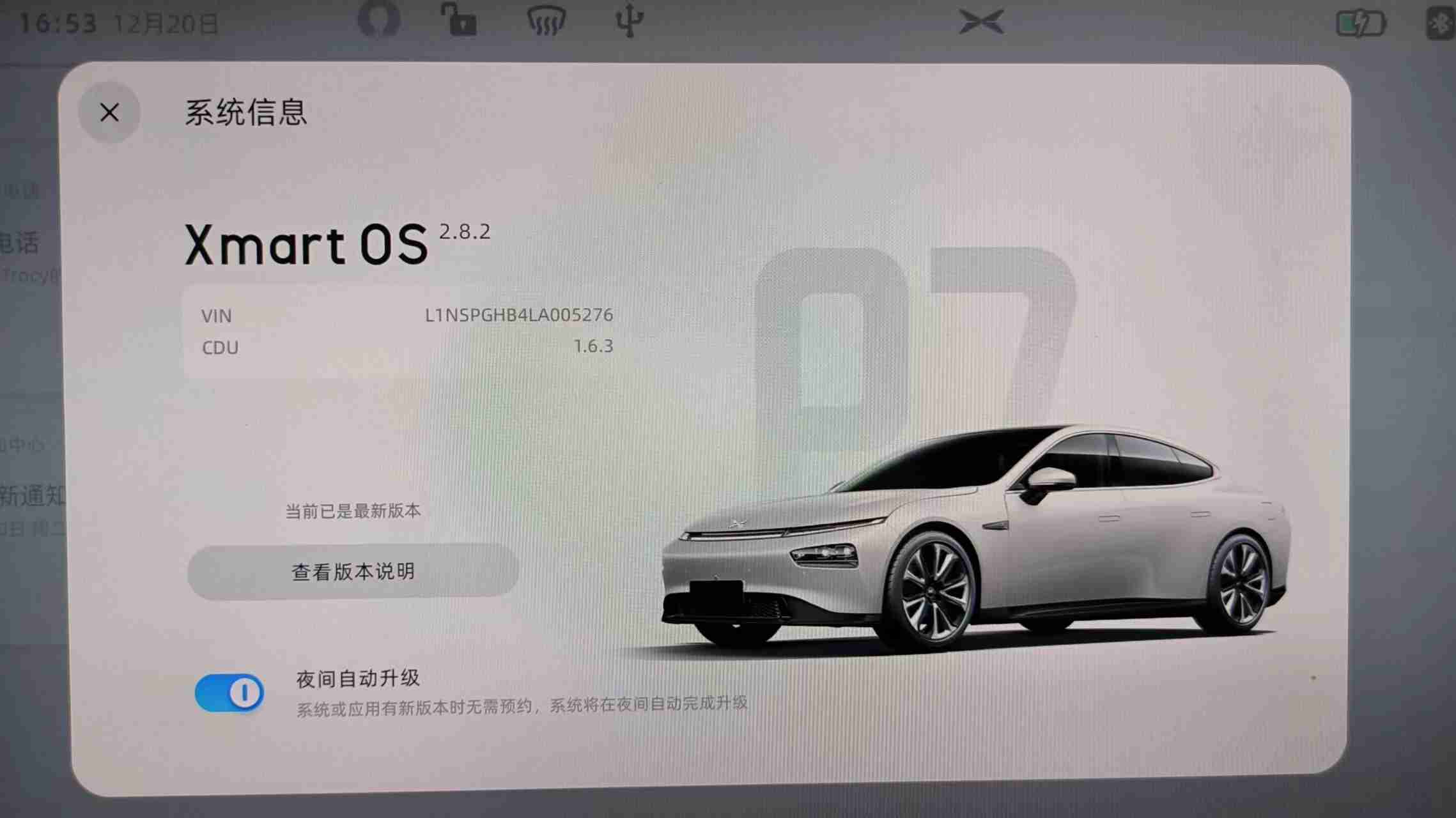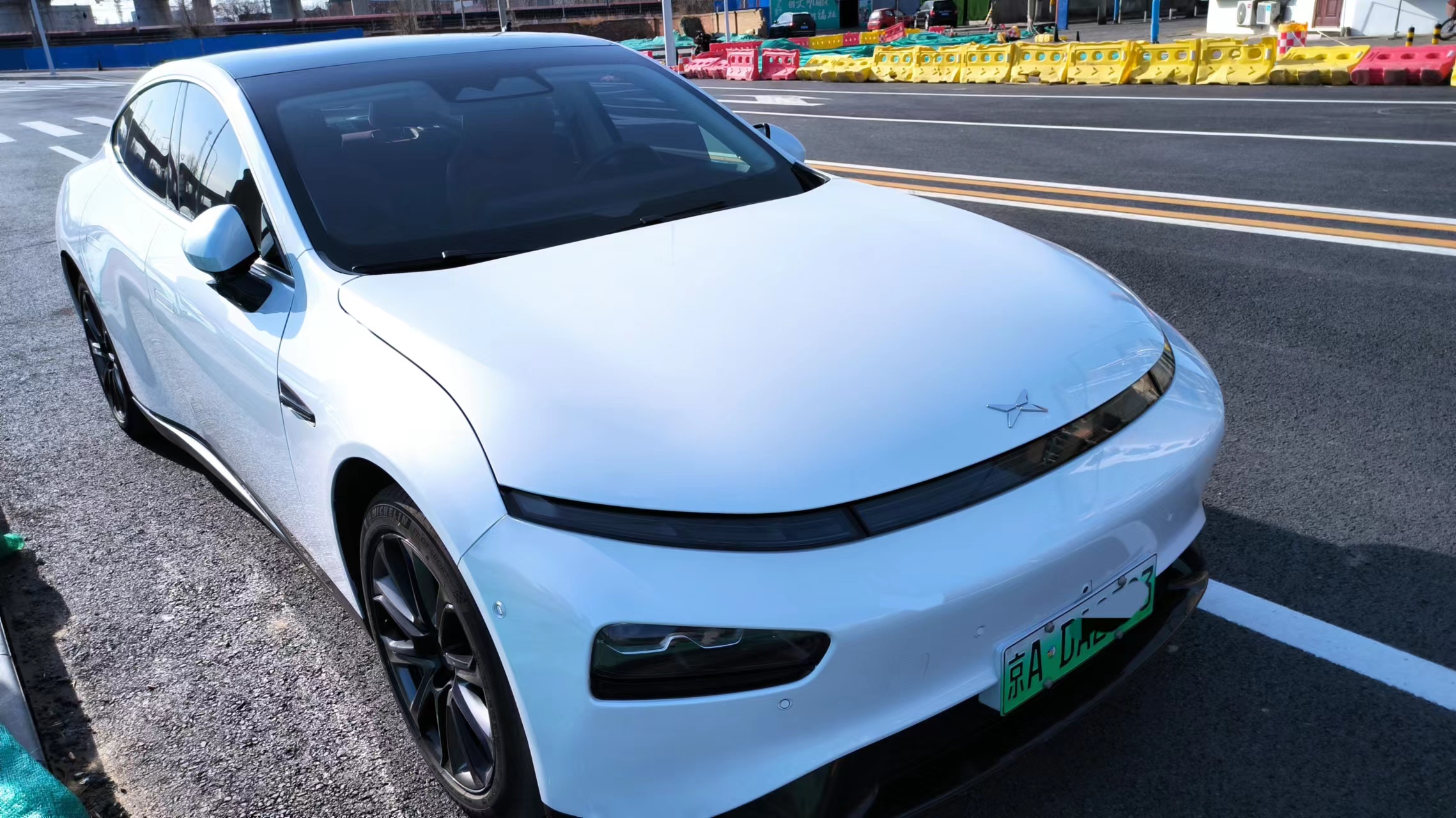Two years ago, when I was still in Foshan, I had the opportunity to experience the newly-launched XPeng P7 thanks to a former colleague of mine who worked at XPeng’s plant in Zhaoqing. As an engineer of a traditional automaker, my curiosity led me to see what a new player in the field could achieve in terms of automotive innovation. I vividly remember inspecting the gaps, overlaps and paintwork of the car upon seeing it for the first time, and listening for any abnormal noise or discomfort during the test drive.
Two years have passed, and XPeng P7’s achievements are undeniable. My understanding and perception of the car have also evolved through time, so I borrowed my friend’s car to test drive it thoroughly once more.
In this article, we will discuss the advantages and disadvantages of the car in separate sections.
Vehicle Information
The car we test drove is the 2-year-old rear-wheel-drive long-range smart version with music cabin, which has a mileage of 48,000 km. The car is equipped with X-pilot 3.0 hardware and Xmart OS 2.8.2 system.

Traditional Aspects
Here are a few impressive features of XPeng P7. The suspension provides excellent support, with a balance between softness and hardness, which inspires confidence when changing lanes or making turns. Compared with other cars costing less than CNY 300,000, the chassis quality ranks among the best, along with the Lynk&Co. 09. Furthermore, the car itself is quiet due to its electric power supply. Alongside the comfortable seats, the car runs silently even at high speed. Compared to last week when we tested the Skoda Kodiaq automatic double-clutch, we found that we no longer want to consider Volkswagen.
Infotainment System
The 820A infotainment system is still smooth and efficient after three years. Its UI design is simple and eye-catching, and commonly-used menus are readily available without having to scroll through multiple screens. Navigation and phone connections are as easy to use as they are on a phone, which allows one to send addresses for WeChat, Gaode Maps, Meituan, or Dianping directly from your phone to your car. Dana’s audio effect is outstanding. The most surprising aspect is that the navigation voice comes from the two sides of the driver’s headrests, and is barely audible to other passengers in the car. Of course, this function requires the music cabin option, which costs CNY 18,000. The voice assistant is extremely user-friendly, and can effectively handle input through speech, so that I am willing to call it the best voice assistant for cars.
Autonomous Driving
XPeng P7 has evolved significantly twice in the past two years. The first evolution was over-the-air (OTA) updates that added assistive driving and full-scene voice assistant support. The second evolution added NGP (Navigation-guided Pilot). Both of these OTA updates have transformed the car’s performance to a large extent. Regarding autonomous driving, it has three levels: Adaptive Cruise Control (ACC), Lane Centering Control (LCC), and NGP.
ACC can be turned on at any time, which is actually the adaptive cruise control in full-speed range. It can be seen on some high-end traditional gasoline vehicles as an active safety feature in urban road scenarios. The start-stop action is smooth and not abrupt, but slightly slow. The braking distance will not be cut in, but due to the slow acceleration, it is easy to be cut in and requires human intervention to accelerate to avoid it. In the case where there is no cut-in in the adjacent lane, it can be almost operated without human intervention, and the only thing to note is the close cut-in after the vehicle starts.
LCC can be turned on in clear lane conditions to achieve lane keeping and adaptive cruise control. The most test of LCC’s ability, in addition to lane recognition, is target selection, especially for sudden CUT IN. Overall, this part is good, especially in the process of driving at higher speeds, the processing of CUT IN is close to that of human drivers. It requires a bit of throttle or slight braking after maintaining a reasonable distance. However, in low-speed processes, there will be over-braking, followed by a few seconds of decision-making time, before starting to drive again, which affects the passing of the rear vehicle. In scenes where the lane lines are unclear, the road surface has repair marks, the lane lines at the intersection change, etc., LCC can follow the car and pass through. It can also pass through small junctions on its own, but there is a safety hazard in changing lanes during the process of finding the lane lines again when passing through the intersection.
Although automatic cornering can now be achieved, the process is thrilling. The steering wheel will be constantly adjusted left and right, and the speed is not fast. Moreover, the speed is fast or slow. If it is a single-lane ramp bend, it is afraid of being secretly cursed by the following cars. LCC can also turn on lights to change lanes. This function is somewhat mediocre, and the lane change acceleration is very abrupt.
As it does not require frequent turns and lane changes, LCC is still very practical on urban expressways. It is unclear how far the future of autonomous driving will develop, but LCC is definitely a must-have for daily commuting and work.
Overall, the NGP experience did not meet my expectations. There have been invalid lane changes for unknown reasons, and it was quite scary when it missed the exit due to lane changes overtaking, and encountered strong demands for takeover during road construction. But from another perspective, the freshness of high-precision maps is good, and the construction position on the road will issue a warning two kilometers in advance.
The success rate and stability of NGP in the process of changing highways at high speeds are quite high. It automatically changes lanes to the far side about 1.8 kilometers in advance, and there have been no cases of missing exits or NGP exits. The animation of lane changes and overtaking is clear, and the lane change position is marked on the target lane. The lane change process is continuously tracked until it is overlapped with the target position. The speed of the bend is determined by the flow rate, without pursuing a speed limit of 40km/h or 60km/h. However, in the absence of traffic flow, as mentioned earlier, the speed of the car is sometimes fast and sometimes slow, as if the speed of the bend is determined according to the curvature of the bend.For high-speed scenarios, NGP, with high-precision maps and a bunch of perception hardware, is very valuable for eliminating fatigue during long-distance travel and improving safety, as the vehicle movements throughout the journey do not need to be too frequent and do not need to obsess over changing lanes, overtaking, and automatic exiting. A camera on the top of the steering wheel monitors the driver’s status throughout the entire journey, and if the driver dozes off or looks away from the driving route for a long time, an alarm will be issued, and the seat belt will be tightened as a reminder.
It is now said that XPeng P5 and G9, which are equipped with lidars, can achieve LCC-L lane keeping and following in more complex road conditions, and X-NGP can also achieve point-to-point automatic driving on urban roads.
Automatic parking seems to have a sensor malfunction this time. After detecting, selecting a parking space, and planning a path, an obstacle is always displayed during the motion control process, causing cancellation of the parking. The car has not been driven into a parking lot or tested for memory parking. It will be supplemented next time there is a chance.
Endurance and Charging
Let me briefly talk about endurance and charging. The NEDC nominal range for this car is 670 km. After driving 50,000 km, in Beijing’s winter environment of -1℃~-10℃, with the air conditioning at 25℃, the actual range is approximately 350 km when fully charged.
During the charging process, I have to compliment XPeng’s self-built charging piles. The vehicle’s navigation system can unlock the ground lock, and its peak voltage can reach 350V. It takes about 75 minutes to charge from 200km to 540km.
Disadvantages
In addition to the Denon sound system with automatic extension, the vehicle’s interior design and luxury feel are relatively lacking, with a large plastic table in front of the front passenger. The charging port and opening of the trunk lid can only be operated on the car’s control panel. The steering wheel lacks touch and does not have a heated steering wheel, which is not very friendly for friends in the north. The layout of the multi-functional keys is also not very reasonable. The blank space of the two keys on the lower left side is too large, and I have never used the two keys before. Third-party software on the car’s control panel does not seem to be well adapted, for example, QQ Music has a playback interface that is displayed in a large window, and there is also a floating close/ maximize/minimize window blocking the close button in the upper-left corner of the window. The visualized model of the driving assistance is very limited, with only box trucks and cars displayed, with no MPV or other types of vehicles available. These are all the issues I can think of at the moment, and I will gradually add more later.## Markdown text in English with HTML tags kept
Let me introduce an electric car, which can deliver the same driving experience as most gasoline cars, in terms of the so-called “driving feel”. Moreover, electric cars are quiet, accelerate quickly, and are highly intelligent. Here’s an example: today I went out with a friend’s child, who dozed off quietly in the car while enjoying the warmth from the heater for two hours. This is something that gasoline cars cannot provide, and the same goes for a quiet nap with air conditioning on a hot summer day.
This article is a translation by ChatGPT of a Chinese report from 42HOW. If you have any questions about it, please email bd@42how.com.
